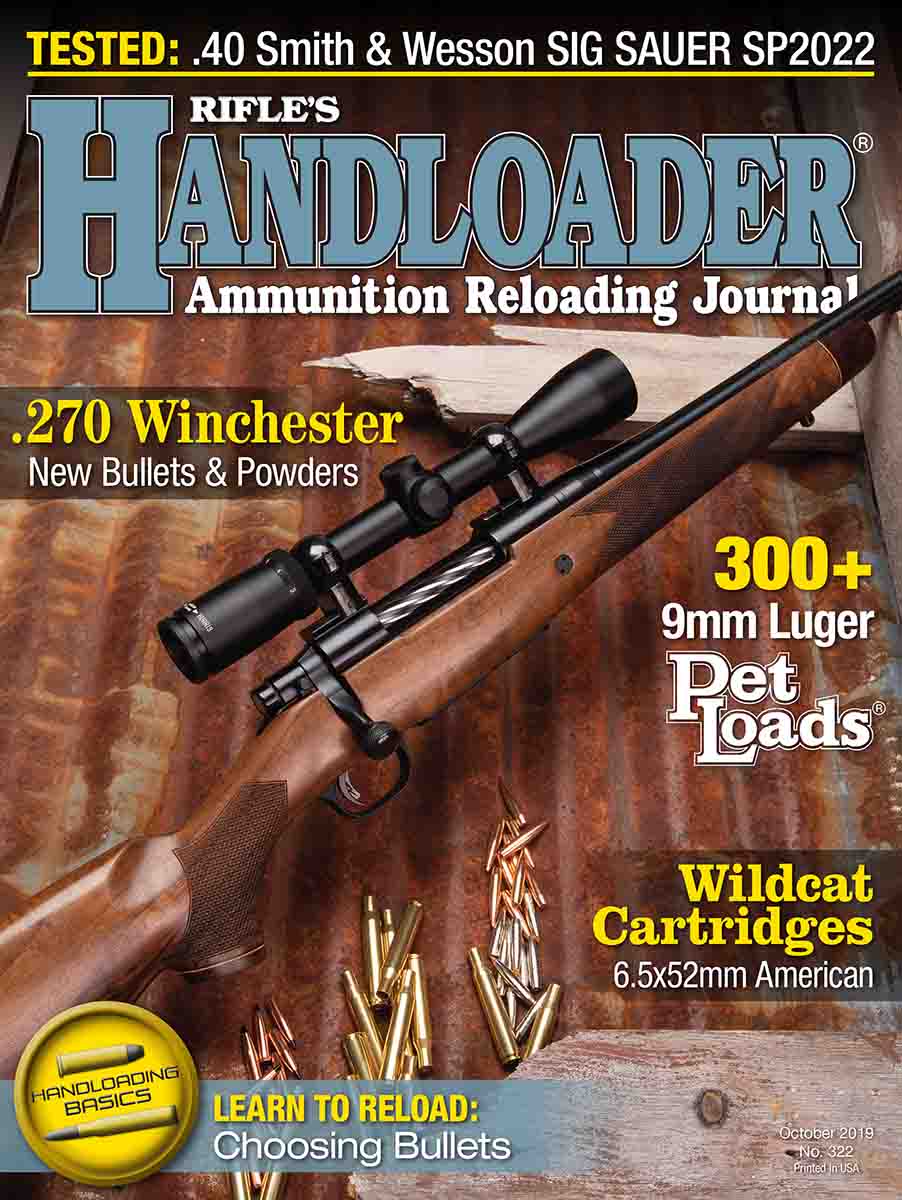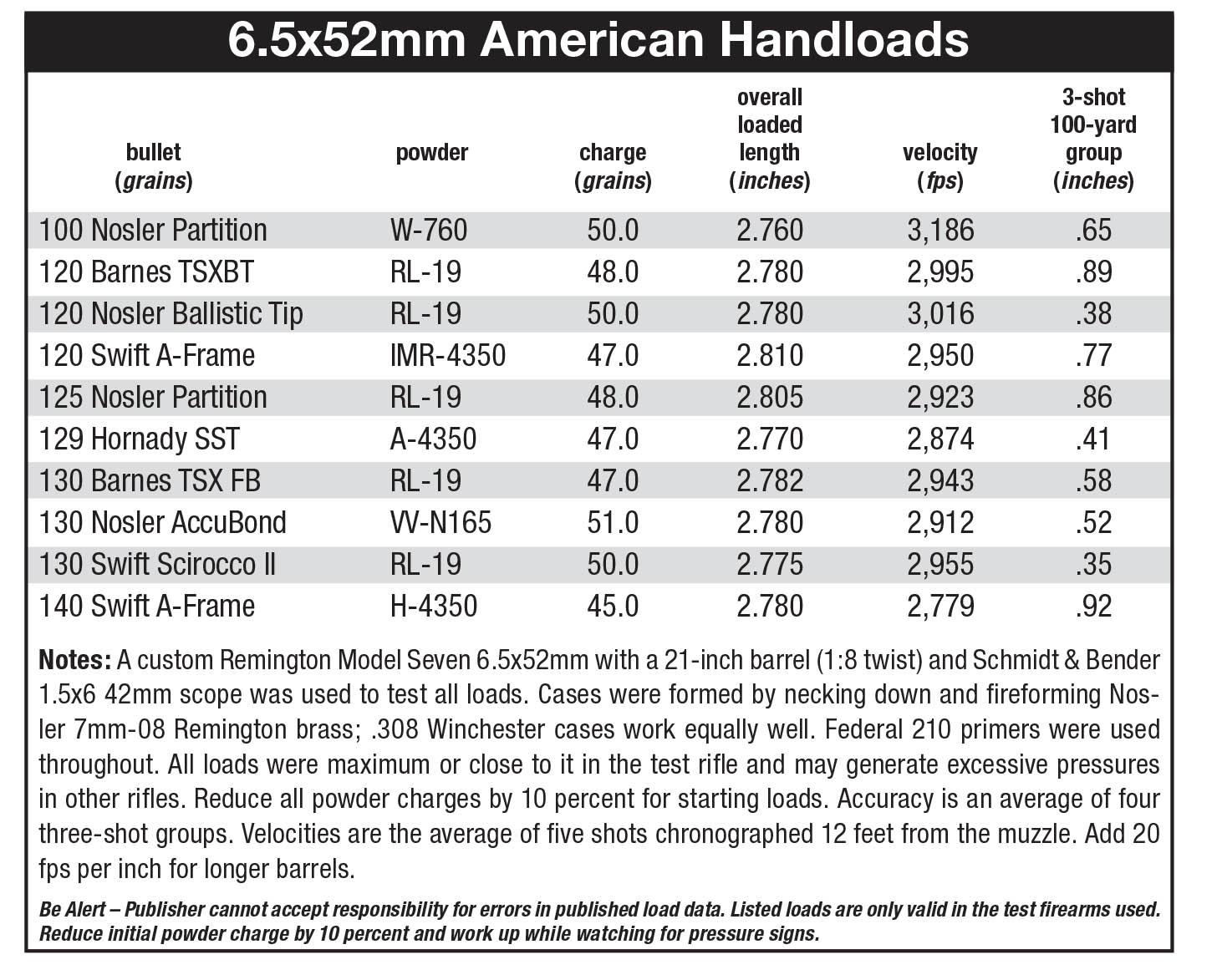Wildcat Cartridges
6.5x52mm American
column By: Layne Simpson | October, 19
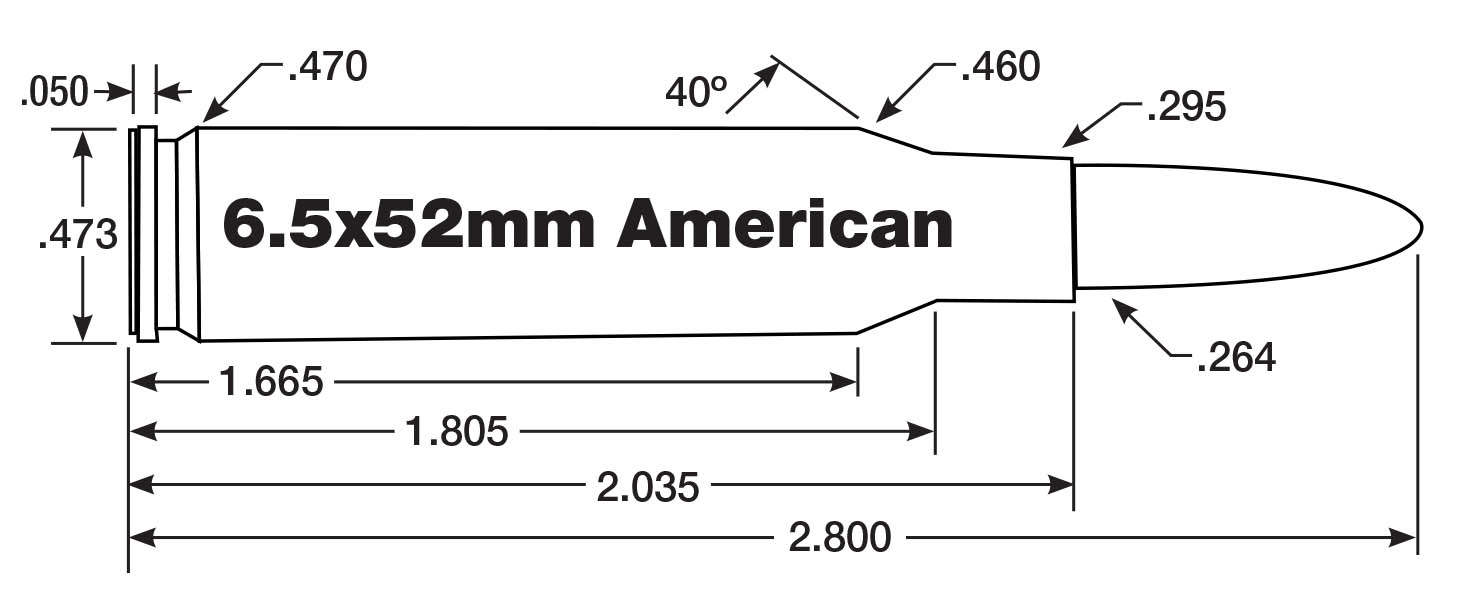
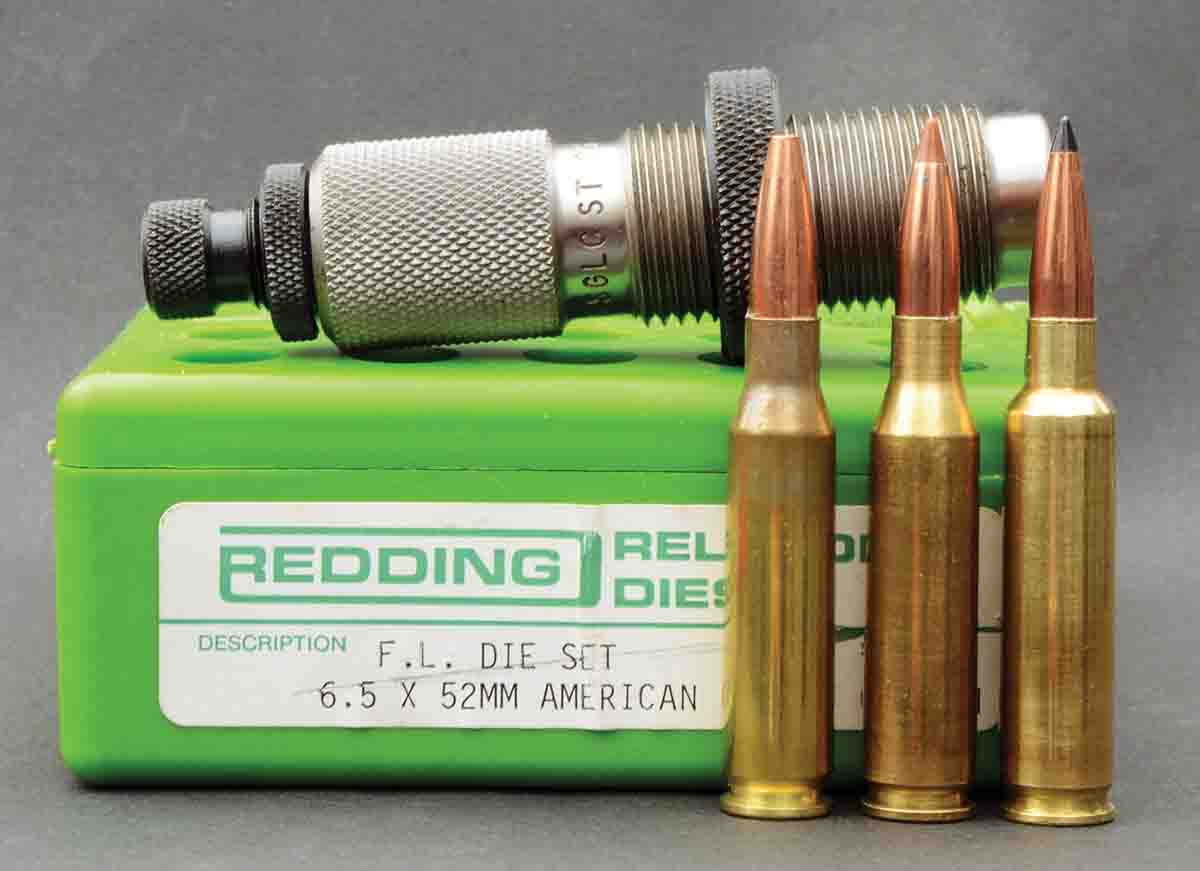
Eager to save the world, I scurried to my loading room only to discover the absence of .308 Winchester cases. But there was a good supply of 7mm-08 Remington so they got necked down to 6.5mm. This, by the way was in 1990, seven years prior to the introduction of the .260 Remington.
When a water capacity comparison revealed a bit less than for the 6.5 Swede, I recalled a 7mm wildcat that I had concocted in 1977, three years prior to the introduction of the 7mm-08 Remington. It was formed by necking down the .308 Winchester case for .284-inch bullets and fireforming to minimum body taper and a 40-degree shoulder. Rifle and ammunition were still on hand, so I sent several of those cases to
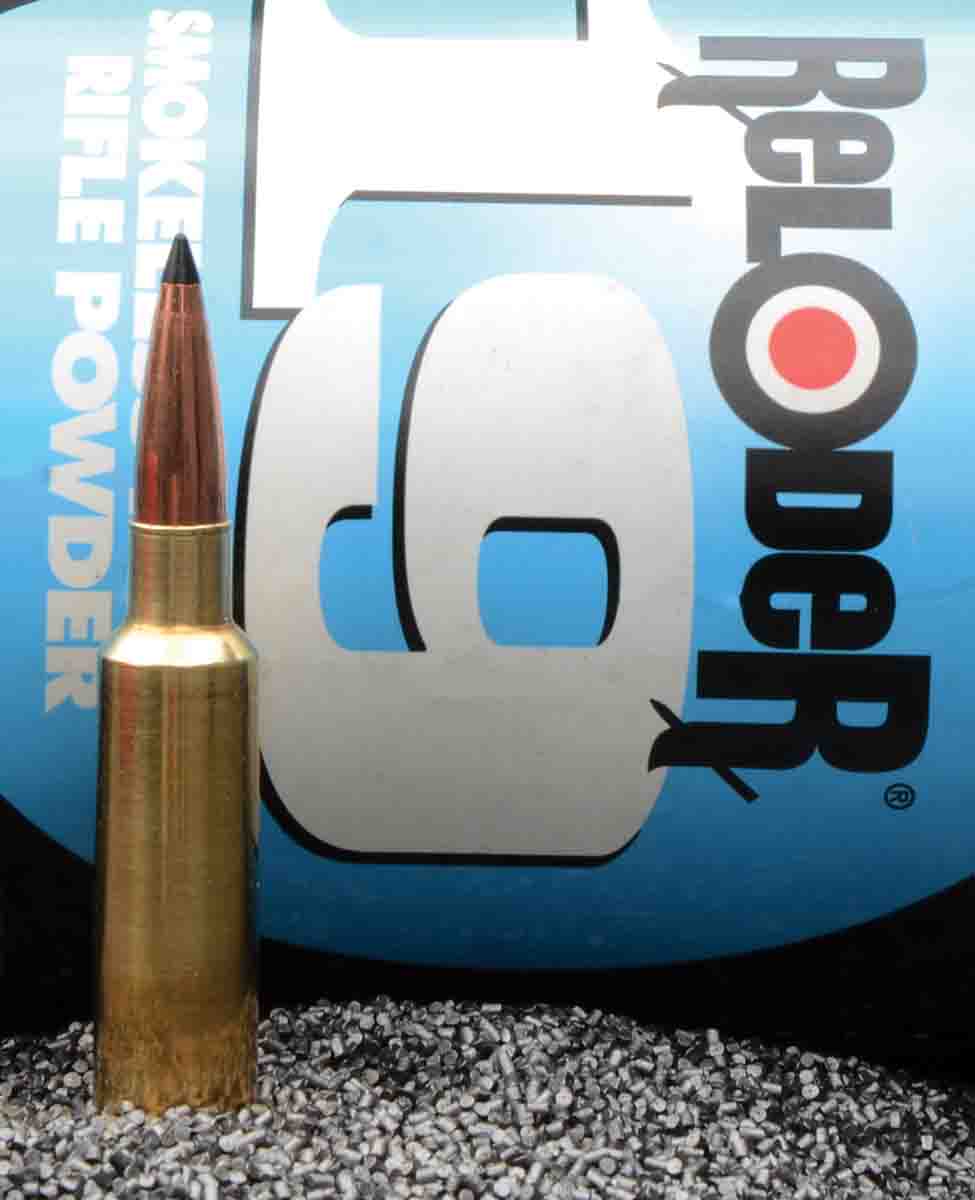
My original intent was to call the cartridge the 6.5x51mm American, but since it began life on the 7mm-08 Remington case, which is about one millimeter longer than the .308 Winchester case, it became the 6.5x52mm American. Of course, the .308 and .260 Remington cases work equally well. Clymer made those first chamber reamers.
My 6.5x52mm rifle is a custom switch-barrel job built on a Remington Model Seven action by Kenny Jarrett in 1989. That was before Jarrett began making his own barrels, so its first barrel was made by
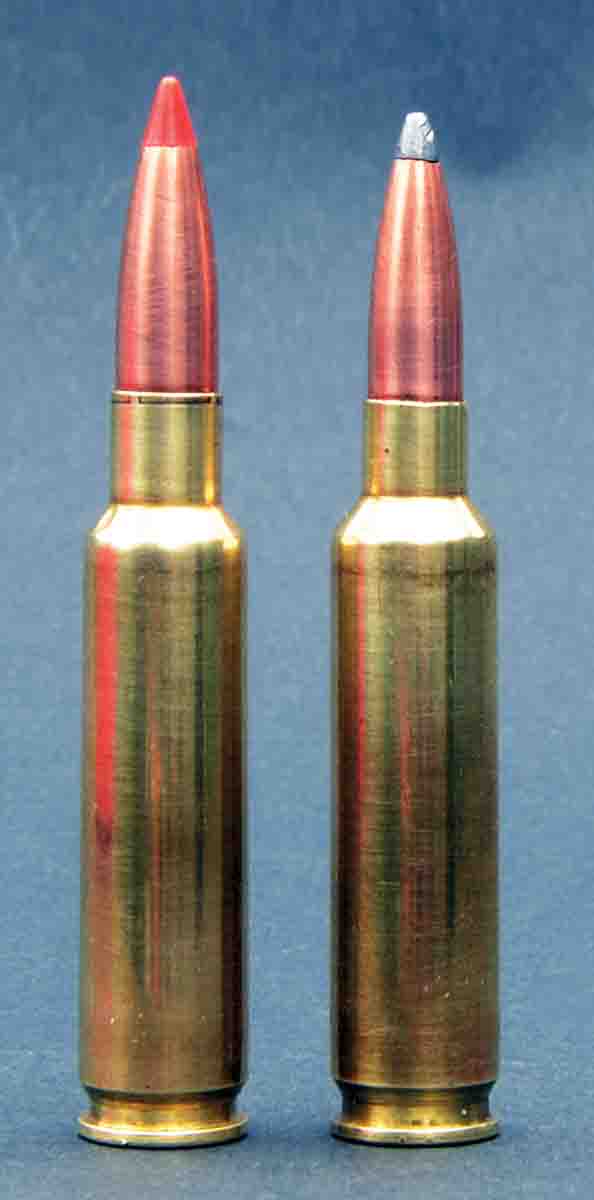
Deer season in my neck of the woods has long opened on August 15 and runs through December. When adding the little rig to my battery, I was seriously into shooting deer over cultivated fields early in the season when soybean plants were young and tender enough to attract hungry deer. Wise old bucks that have not gone completely nocturnal often cautiously wait to step out of the brush and into the open to start feeding when the final minutes of shooting light are rapidly draining from the day. That calls for a scope with excellent optical quality and the capability of transmitting as much light as possible, so I chose a Schmidt & Bender 1.5-6x 42mm scope. To this day, the rifle still wears that scope.
Other barrels in 7mm-308 Improved, .308 Winchester and .358 Winchester were eventually added.
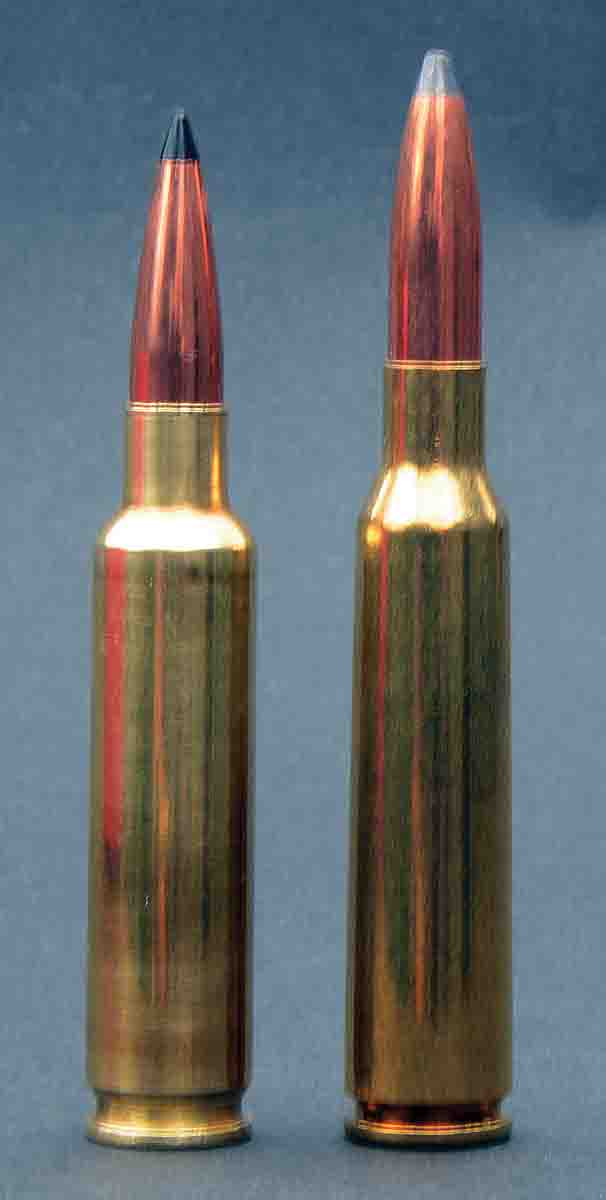
After fireforming Remington 7mm-08 cases in the rifle, I compared their average capacity with 6.5 Swede brass made by Winchester, Remington and Norma. Respective gross capacities were 56.1, 55.8 and 54.4 grains. Capacity for the 6.5x52mm formed from Remington 7mm-08 brass was 55.3 grains. Not much difference there, but usable capacity is more meaningful. When a Swift 120-grain A-Frame is seated to a cartridge length of 2.810 inches, its base is positioned at the midpoint of the shoulder of the 6.5x52mm case, so it allows close to 100 percent of the cavity to be utilized for powder. The Nosler 125-grain Partition is a tad longer so reaches a bit deeper into the case.
At this point in the game the 6.5x52mm and 6.5 Swede are quite close to the same in potential velocity. Switch to heavier (longer) bullets that occupy less powder space in the Swede because they are not seated as deeply for the magazine of a long-action rifle and the old-timer pulls ahead of the youngster. This assumes both are loaded to the same chamber pressure and fired in barrels of the same length. This is a moot point to me because when hunting with various 6.5mm cartridges through the years I have mostly used bullets weighing less than 140 grains. My favorite bullet in a Winchester Model 70 Westerner .264 Winchester Magnum has long been the Nosler 125-grain Partition. My rifles in 6.5 Creedmoor, 6.5 Swedish and 6.5 Remington Magnum are also fond of that bullet as well as the Swift 120-grain A-Frame. When all is said and done, though, a bullet weighing around 130 grains of proper construction may be the best all-around choice for use on everything from southern whitetails to Alaska-Yukon moose.
Powders that work nicely in the 6.5 Swede, .260 Remington and 6.5 Creedmoor work equally well in the 6.5x52mm American. More specifically, those with medium-slow burn rates such as Reloder 19, W-760 and H-414, Vihtavuori N165 and the three 4350s from Hodgdon, IMR and Accurate are hard to beat. Starting charge weights published in various reloading manuals for the .260 Remington can also be used.



